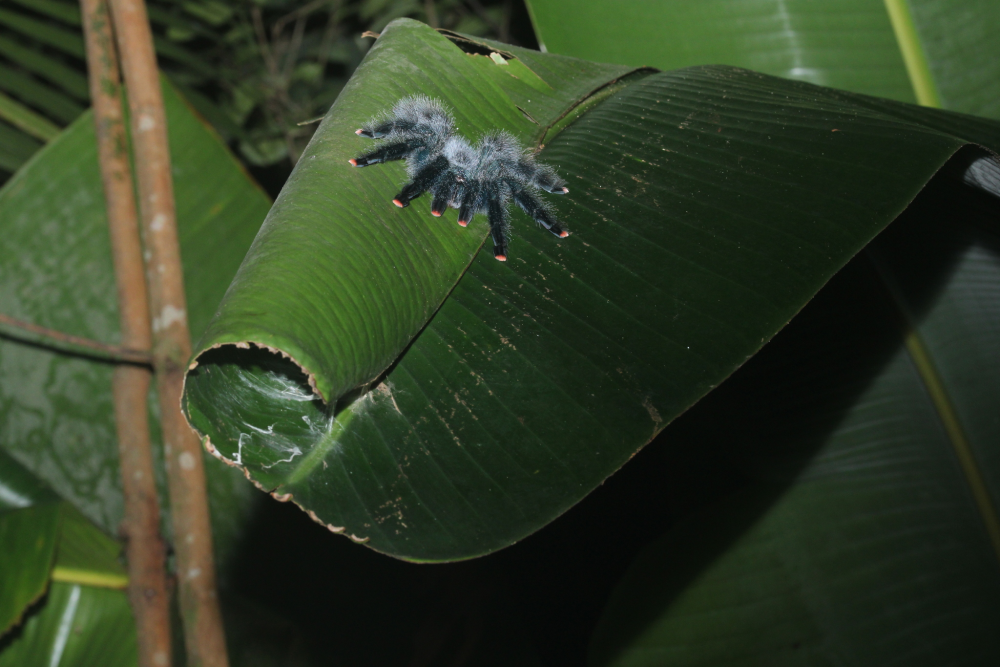In Central and South America stomps a tarantula with a really snazzy appearance. With a blue-brown fuzzy coat, it’s so fluffy it has actually been able to weaponize its hairiness, but the real statement piece are its little pink booties. Yes, that pinktoe tarantula really does have delightfully pink toes.
The pinktoe tarantula is known to science as Avicularia avicularia, but it’s not the only tarantula working the pink booty trend. There’s also the yellow-banded pinktoe, Avicularia juruensis, and as you might have surmised from their Latin names, they’re relatives.
The A. avicularia variety of pinktoe tarantula can be found strutting its stuff across Central and South America, including Bolivia, Brazil, Guyana, Peru, Suriname, and Venezuela. You’ll also bump into them in French Guiana, which is where IFLScience’s very own space correspondent Dr Alfredo Carpineti spotted one while visiting Europe’s Spaceport in Kourou (turns out spaceports make great wildlife sanctuaries, and you can hear all about it in the below episode of Break It Down).
The pinktoe tarantula’s projectile hairs
The pinktoe tarantula isn’t exactly a giant, with an average body length of around 7 centimeters (2.75 inches), but what they lack in might they make up for with projectile body hair. Yes, threaten a pinktoe tarantula and it whips out a defense mechanism seen in many plant and caterpillar species, as well as almost all New World tarantulas including Avicularia.
On their bodies, pinktoe tarantulas have urticating hairs (“urtica” comes from the Latin for nettle, which is why stinging nettles are in this plant genus). They aren’t born with them and get more each time they molt, which is why as babies they have quite pale bodies that get progressively darker.
There are different types of urticating hair, some fall off on contact such as when a predator takes a cursory bite. Others can be turned into mini projectiles as they get kicked off by the tarantula. They’re very irritating and most effective on invertebrate and vertebrate threats – even some mammals can be put off and harmed by flying hairs.

A pinktoe tarantula’s toes looking very pink.
Pinktoe tarantulas and sperm webs
And at last, we arrive at the sperm web. When it’s time for pinktoe tarantulas to make baby pinktoe tarantulas (which have adorable little legs, FYI) the male will construct a specialized structure known as a sperm web. It’s a dense sheet of silk that it fixes to a substrate, taking a few hours to perfect his creation.
Once it’s just right, he sneaks underneath to deposit droplets of sperm across the web, then scuttles topside so he can rub it with his palps (small appendages near his mouth). Doing this effectively loads them up with sperm so that when the opportunity arrives to mate, he can insert his sperm directly into her reproductive organs. It’s a perhaps strange and quite complex approach, but very effective.
You might not like it, but that’s what peak sexual performance looks like for the pinktoe tarantula.
Source Link: The Pinktoe Tarantula Spins Sperm Webs While Rocking Adorable Pink Booties